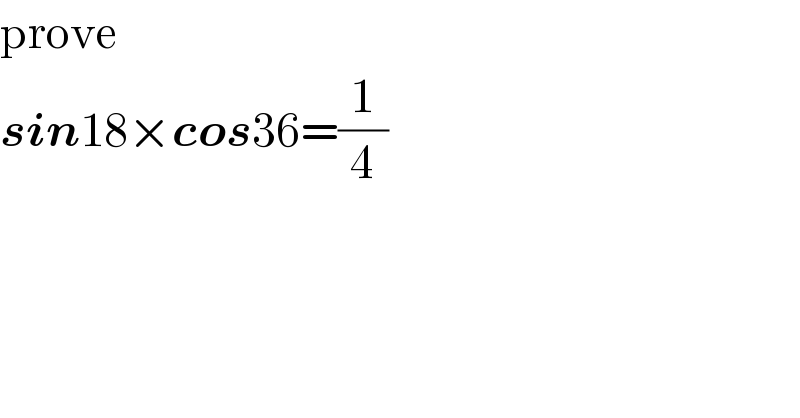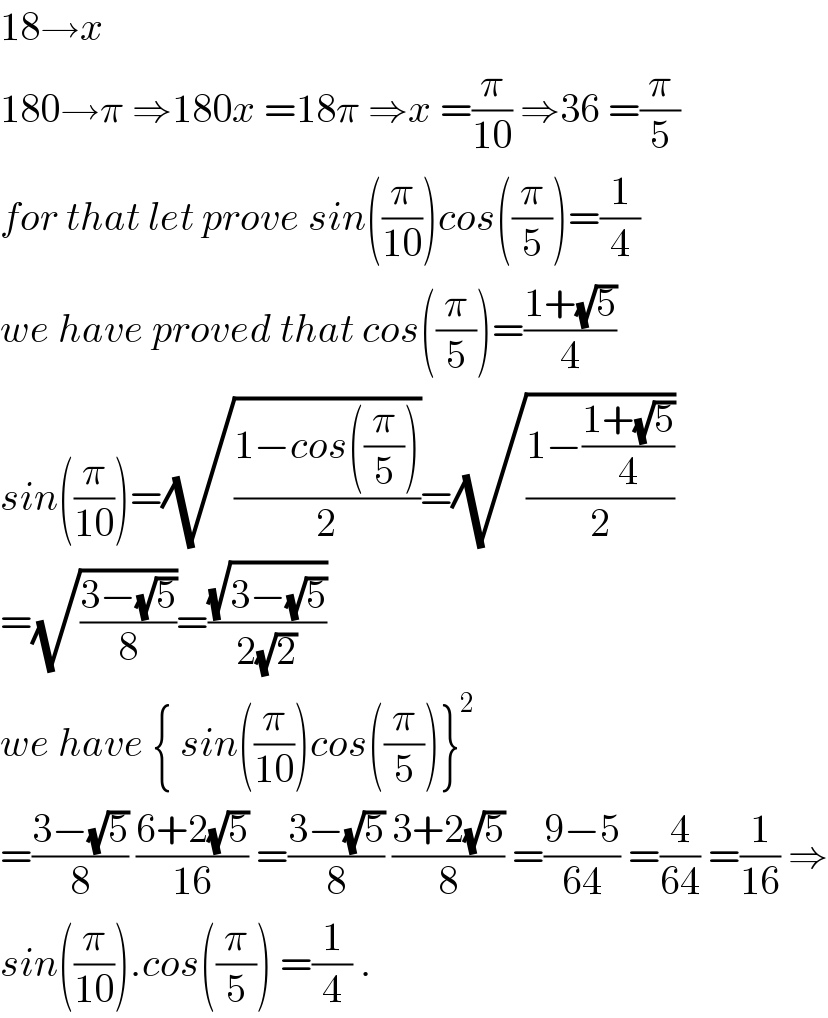
Question and Answers Forum
Question Number 57474 by malwaan last updated on 05/Apr/19

Commented by Abdo msup. last updated on 05/Apr/19

Commented by malwaan last updated on 06/Apr/19

Answered by tanmay.chaudhury50@gmail.com last updated on 05/Apr/19
![a=18^o 5a=2a+3a=90^o 2a=90^o −3a sin2a=sin(90^o −3a) 2sinacosa=cos3a 2sinacosa=4cos^3 a−3cosa cosa(2sina−4cos^2 a+3)=0 cosa≠0 2sina−4(1−sin^2 a)+3=0 4sin^2 a+2sina−1=0 sin18^o >0 [ 18^o lies in first quadrant] sina=((−2+(√((2)^2 −4×4×(−1))))/(2×4)) sin18^o =((−2+2(√5))/8) sin18^o =(((√5) −1)/4) cos36^o =1−2sin^2 18^o =1−2((((√5) −1)/4))^2 =((16−2(5−2(√5) +1))/(16))=((8−(6−2(√5) ))/8) =((2(√5) +2)/8)→(((√5) +1)/4) sin18×cos36 =(((√5) −1)/4)×(((√5) +1)/4) =((5−1)/(16))=(1/4) i have derived the value of sin18^o and cos36^o then solved the problem.. for short cut method memorize the value of sin18^o and cos36^o then solve it...](Q57476.png)
Commented by malwaan last updated on 06/Apr/19

